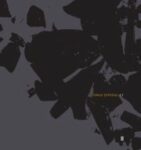Beskrivelse
In former times, life was like a book of some kind: it was necessary to leave some pages blank.
This aphorism was the second of threee such remarks that Forneret addresses to the reader of his Pièce de pièces, Temps Perdu (E. Duverger, 1840). As Charles Monselet pointed out, it was a particularly appropriate observation: although Forneret’s book contains only seven short works (one of which being Le Diamant de l’Herbe), by virtue of the fact that it was printed on only one side of the page it also managed to constitute a volume of substantial proportions.
The stories themselves were well in keeping with what we have come to expect of the man who styled himself Un homme noir, blanc de visage. Not the least pessimistic was the one which concludes by the Spanish hero committing suicide by swallowing his mistress’s glass eye. But it is Le Diamant de l’Herbe which has come to be acknowledged as Forneret’s most significant piece. Breton described it as his masterpiece when it was reprinted in the Surrealist review Minotaure.
Forneret was not the only eccentric romantic writer to be interested in the symbolism of glow-worms. Charles Nodier, whose fascination with madness, pessimism, and dream states was almost equal at times to that of Forneret, published two translations of a work by the Slavonic poet Ignazio Giorgi originally entitled Svijecnjak (i.e. Glow-worm). This work was intended for a collection of Giorgi’s poetry completed about 1716 but never published during the poet’s lifetime.
Nodier’s first translation, as Vers Luisant, appeared in the Télégraphe illyrien in 1813; the second (which is the version translated here), under the title La Luciole, in Smarra in 1821.
Although Nodier explained that his original intention in making the translation was to establish that Giorgi understood the nature of pathos, and although the work contains ample proof of Nodier’s contention, there are also descriptive passages of a rare Forneret-like intensity contained in it.



